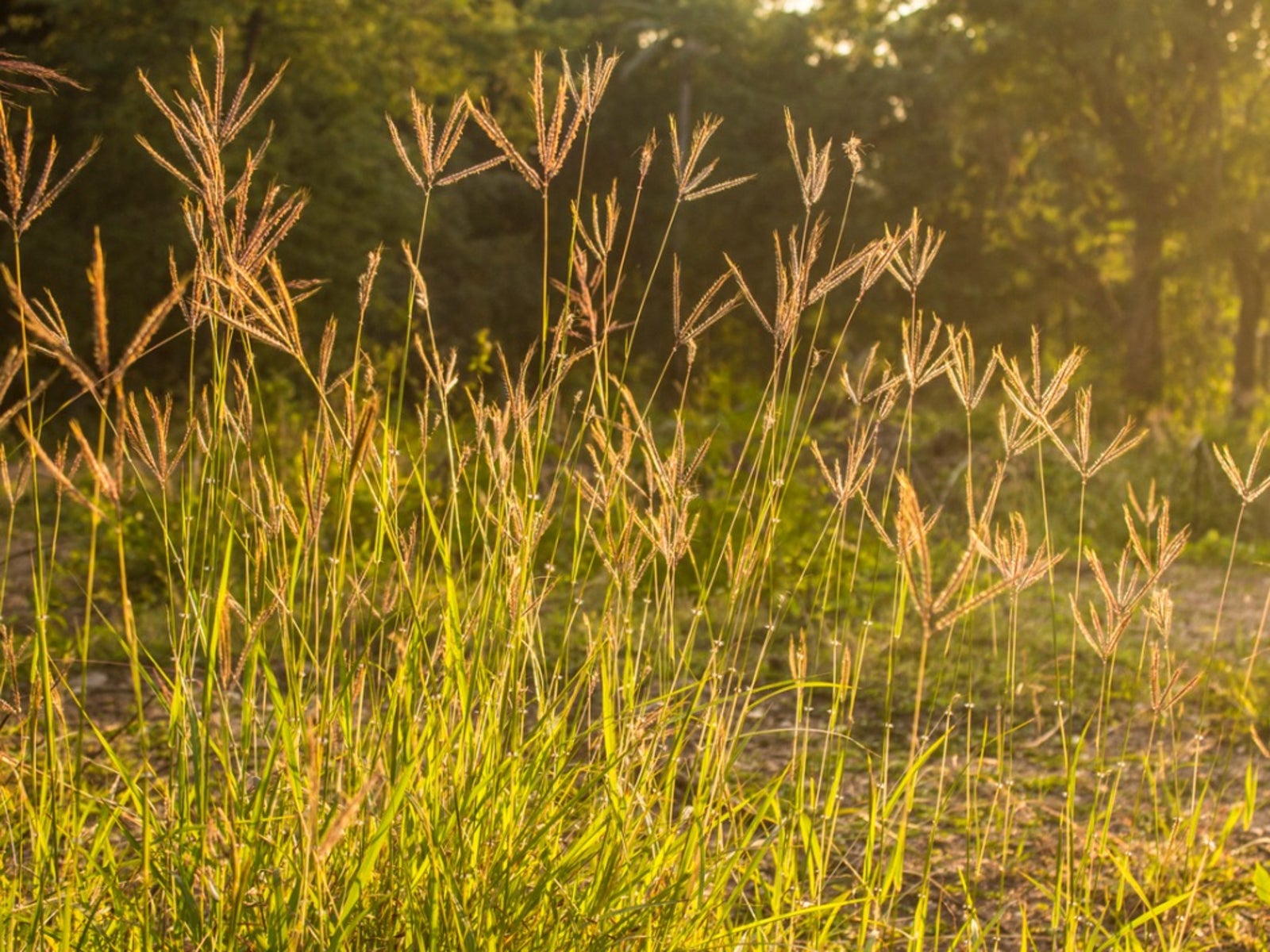What Is Windmill Grass: Learn About Windmill Grass Information And Control
Windmill grass is a prolific grower. Its windmill spikelets help to identify it.


Windmill grass (Chloris spp.) is a perennial found from Nebraska to southern California. The grass has a characteristic panicle with spikelets arranged in a windmill fashion. This makes windmill grass identification fairly easy, especially if site and growing conditions match the plant's requirements. The panicles, or blooms, are visible from May until the first frosts. Native species gardeners will want to learn windmill grass information and try this for erosion control, deer resistant planting, and to attract butterflies. That being said, however, windmill grass control is often necessary, as this is a prolific grower.
What is Windmill Grass?
Even wild species aficionados may wonder, “What is windmill grass?” This warm-season grass and member of the Poaceae family has a fibrous root system, which can be divided for propagation and makes an excellent erosion control. The grass may grow between 6 and 18 inches (15-46 cm.) tall. The flower heads are 3 to 7 inches (8-18 cm.) across and start out reddish but mature to a beige or brown color. The seed head is comprised up of eight spikelets that radiate out from a central stem.
Windmill Grass Information
The plant is dormant in winter and does most of its growth in the springtime. The dried stems in winter provide important forage for birds and other animals.
Flowering occurs four to six weeks after germination. Much of the plant's population is found in disturbed areas or crop fields. It is a widespread weed in Australia where it takes over and can cause problems with livestock, such as liver problems and even photosensitivity. This potential makes windmill grass control imperative in areas with large cattle populations.
Growing Conditions for Windmill Grass
Windmill grass is not picky about its soil type but does require full to partial sun. This grass actually prefers nutrient-poor soil with plenty of sand, rock, or grit. You can find this plant in its native range in sandy ranges, barren wastelands, roads, lawns, and gravel areas.
The best growing conditions for windmill grass are arid, gritty zones with hot summers but plentiful spring rain. It is not particularly weedy in most areas, but parts of Texas and Arizona have found it to be a range pest.
Windmill Grass Control
In very dry areas of the United States, the plant tends to seed and populate turf grasses which require intervention to protect your chosen species of grass.
Gardening tips, videos, info and more delivered right to your inbox!
Sign up for the Gardening Know How newsletter today and receive a free copy of our e-book "How to Grow Delicious Tomatoes".
Windmill grass control is easier when your turf grass and sod are healthy and cared for. Aerate once per year, water consistently, and fertilize once per year to enforce the health of the sod. This keeps alien species from taking hold. In Australia where the weed can become rampant, experts say, "Non-chemical options for the treatment of windmill grass include tillage and crop competition."

Bonnie Grant is a professional landscaper with a Certification in Urban Gardening. She has been gardening and writing for 15 years. A former professional chef, she has a passion for edible landscaping.
-
 Grow ‘Karl Rosenfield’ Peony Plants For The Ultimate Frilly Border Beauties And Cut Flowers
Grow ‘Karl Rosenfield’ Peony Plants For The Ultimate Frilly Border Beauties And Cut FlowersFor frilly double magenta peony petals infused with a heady fragrance, grow ‘Karl Rosenfield’ peony plants. Here’s how to cultivate the ultimate plushy blooms
By Tonya Barnett
-
 10 Common Composting Problems That Can Spoil Your Garden Gold – Plus Easy Fixes
10 Common Composting Problems That Can Spoil Your Garden Gold – Plus Easy FixesLearn how to troubleshoot common composting issues before they ruin your stash – from bad smells and bugs to materials not breaking down as they should.
By Susan Albert